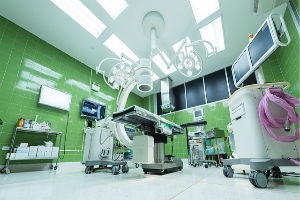You have no items in your shopping basket.
LED Lights for Hospitals - Saving Lives and Energy

The NHS requires many resources, especially energy. All of these resources come at a high cost. With government cuts putting pressure on how the NHS spends its budget, it’s often services and staff that are being cut. A key area that can save energy, as well as money, is LED lights. Here, we’ll look at how the humble yet powerful LED can help hospitals save costs as well as lives.
Changing the attitude of investment
One key area to address is the attitude of investment in the public sector. With so many cuts coming at many different angles, decision makers are constantly in reactive mode. Making an investment requires time and spending money that doesn’t seem available. Investing in new technology such as LED lights means hospitals and hospital trusts could see huge savings in the future.
Save up to 90% on energy bills
Energy isn’t getting any cheaper, even for organisations that can make reductions on outgoings. Hospitals have no choice but to have the lights on 24/7. LED lights pay back their investment in a matter of months and improve efficiency.
Assuring quality
Hospitals may have felt that LED lights aren’t a long-lasting solution as durability was an issue in the past. However, LED lights are coming on leaps and bounds and are made to be durable and long-lasting even in high pressure environments such as A&E wards. The quality of lights is vastly improved from traditional halogen and fluorescent lights, offering a more natural-looking light. Mimicking daylight, LED lights can light hallways and communal areas to help patients and staff see any hazards more clearly.
Less impact on day-to-day operations
One key benefit of LED lights for hospitals is how little maintenance they need. In a busy hospital, failing lights mean staff have to take time out of their normal duties to fit new bulbs. This can also result in more regular hazard risks as staff need to use ladders or platforms. LED lights can stand up to long hours of use and fade out, rather than producing a distracting flicker.
Flexible lighting solutions
LED lights can be paired with dimmable control panels, which can help settle patients in the night and recreate a night-time atmosphere. The lights can be turned up gradually to help simulate sunrise and natural daylight for the patients. LED lights can come in white light, which is easier on the human eye, and this can help with many procedures in hospitals including examinations. Those with conditions such as dementia, autism, and Seasonal Affective Disorder may also benefit from the installation of LED lights to help manage mood and symptoms.
